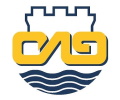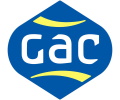Global crude demand recovering on Asian growth: Saudi Aramco CEO

Global crude demand will gain pace in the second half of 2021 to recover to near pre-pandemic levels by 2022, Saudi Aramco CEO Amin Nasser said March 2.
“We are seeing [global demand levels of] 94 million b/d now,” said Nasser, speaking at the CERAWeek by IHS Markit conference. “Our expectation next year is 99 million b/d. China and East Asia are seeing strong demand. India is also picking up to pre-pandemic levels.”
Nasser’s comments came two days before OPEC and its allies are set to convene online to decide on April production quotas. Under the OPEC+ agreement, Saudi Arabia’s crude production has been capped at 9.119 million b/d for March, though Saudi energy minister Prince Abdulaziz bin Salman has said the kingdom would make a voluntary extra 1 million b/d output cut.
The OPEC+ alliance is aiming to gradually ease its quotas as the global economy recovers from the pandemic, though Prince Abdulaziz has consistently urged the coalition to err on the side of caution.
Saudi Aramco has the exclusive right to produce crude within the kingdom’s borders and is the world’s largest exporter of crude.
Nasser said the pandemic spurred Aramco to make changes to its operations. He said the demand destruction wrought by the infections was worse than the drone attacks that Aramco suffered in September 2019 that temporarily took half of Saudi Arabia’s production capacity offline, representing about 5% of the world’s supply.
At its peak, the pandemic wiped out some 20% of global oil demand.
“Aramco was affected early on as the pandemic started. I seriously thought that things wouldn’t get any worse that the attacks experienced at Abqaiq and Khurais,” Nasser said. “Then the market was faced with the biggest challenge of the century, but our industry is used to challenging situations. We sharpened our focus on resilience, which gave us the agility to respond quickly.”
In its latest quarterly earnings results released in November, Saudi Aramco saw its profits crash by 44.6% in Q3 to Riyal 44.21 billion ($11.79billion), compared with Riyal 79.84 billion ($21.29 billion) for the same quarter of 2019, as it continues to battle the ongoing market crash amid the slump in demand due to the COVID-19 pandemic.
Additionally, Aramco moved to cut its capex spend in half. Total capex for 2020 is expected to be which will see it and at the lower end of the $25 billion to $30 billion range for 2020, the company said.
Aramco is scheduled to release its fiscal year 2020 results on March 21.
Growing in gas, hydrogen
Meanwhile, the pandemic accelerated Aramco’s plan to digitalize our operations and employ artificial intelligence. It can conduct technical inspections for the HQ in Dharan, Nasser said.
Gas is almost becoming a focal point of the company’s growth’s strategy, Nasser reiterated.
“Natural gas was seen as a bridge fuel not so long ago. But sentiment has changed. Our view is that gas will still have better credentials over other fuels and will grow significantly in power generation, industry and commercial use,” said Nasser. “For Aramco, we are growing our gas substantially, and by 2030 we’ll have significant, to the point where 50% of the grid will be renewables and 50% gas.”
Saudi Aramco has previously said it aiming for its hydrogen business to be ‘world scale’ by 2030, as that is when it expects to see growth in the market. In September, Aramco made the world’s first blue ammonia shipment – from Saudi Arabia to Japan — for use in power generation.
However, the state oil giant prefers blue hydrogen to green due to cost, Nasser said.
“Production of green hydrogen is $5 to $6/kg. That’s where blue hydrogen comes in, which is two to three times lower in cost,” said Nasser. “I expect the costs for both green and blue to come down in future… We are looking at a lot of projects to capitalize on our gas resources. We are looking at markets because you are looking at huge quantities of hydrogen that need a customer base around the world.”
The barrel of oil equivalent cost for hydrogen is “significant” compared with other sources of energy, Nasser added.
Source: Platts

 Hellenic Shipping News Worldwide Hellenic Shipping News Worldwide, Online Daily Newspaper on Hellenic and International Shipping
Hellenic Shipping News Worldwide Hellenic Shipping News Worldwide, Online Daily Newspaper on Hellenic and International Shipping






















 PG-Software
PG-Software